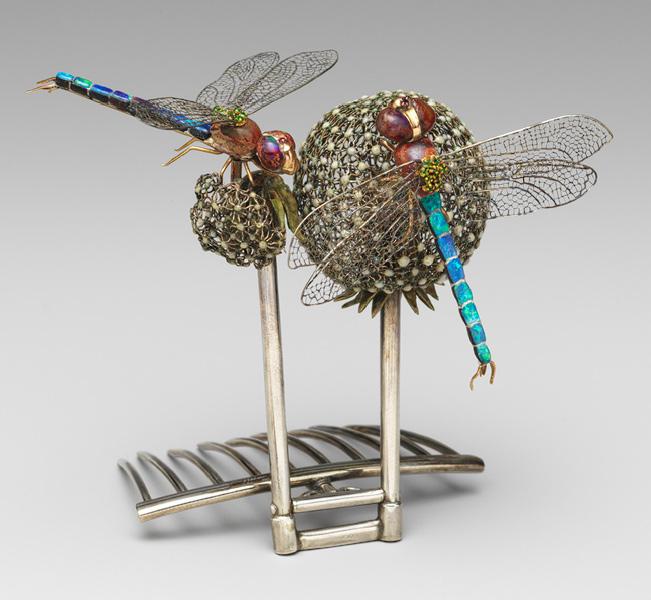
Jewelry
Genre
Jewellery (British English) or jewelry (American English) consists of small decorative items worn for personal adornment, such as brooches, rings, necklaces, earrings, pendants, bracelets, and cufflinks. Jewellery may be attached to the body or the clothes, and the term is restricted to durable ornaments, excluding flowers for example. For many centuries metal, often combined with gemstones, has been the normal material for jewellery, but other materials such as shells and other plant materials may be used. It is one of the oldest type of archaeological artefact – with 100,000-year-old beads made from Nassarius shells thought to be the oldest known jewellery. The basic forms of jewellery vary between cultures but are often extremely long-lived; in European cultures the most common forms of jewellery listed above have persisted since ancient times, while other forms such as adornments for the nose or ankle, important in other cultures, are much less common.
Jewellery may be made from a wide range of materials. Gemstones and similar materials such as amber and coral, precious metals, beads, and shells have been widely used, and enamel has often been important. In most cultures jewellery can be understood as a status symbol, for its material properties, its patterns, or for meaningful symbols. Jewellery has been made to adorn nearly every body part, from hairpins to toe rings, and even genital jewellery. The patterns of wearing jewellery between the sexes, and by children and older people can vary greatly between cultures, but adult women have been the most consistent wearers of jewellery; in modern European culture the amount worn by adult males is relatively low compared with other cultures and other periods in European culture.
The word jewellery itself is derived from the word jewel, which was anglicised from the Old French "jouel", and beyond that, to the Latin word "jocale", meaning plaything. In British English, Indian English, New Zealand English, Hiberno-English, Australian English, and South African English it is spelled jewellery, while the spelling is jewelry in American English. Both are used in Canadian English, though jewelry prevails by a two to one margin. In French and a few other European languages the equivalent term, joaillerie, may also cover decorated metalwork in precious metal such as objets d'art and church items, not just objects worn on the person.
Humans have used jewellery for a number of different reasons:
Most cultures at some point have had a practice of keeping large amounts of wealth stored in the form of jewellery. Numerous cultures store wedding dowries in the form of jewellery or make jewellery as a means to store or display coins. Alternatively, jewellery has been used as a currency or trade good; an example being the use of slave beads.
Many items of jewellery, such as brooches and buckles, originated as purely functional items, but evolved into decorative items as their functional requirement diminished.
Jewellery can also symbolise group membership (as in the case, of the Christian crucifix or the Jewish Star of David) or status (as in the case of chains of office, or the Western practice of married people wearing wedding rings).
This is a part of the Wikipedia article used under the Creative Commons Attribution-Sharealike 3.0 Unported License (CC-BY-SA). The full text of the article is here →
Wikipedia: https://en.wikipedia.org/wiki/Jewellery

